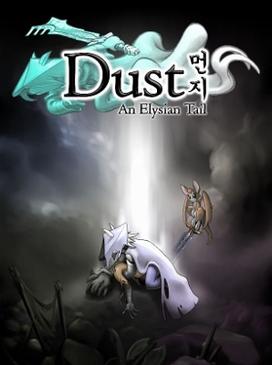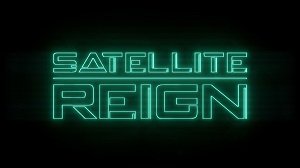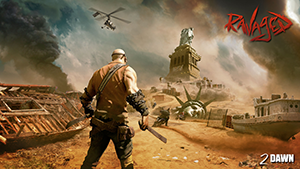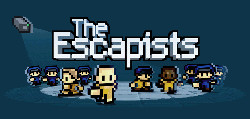
Star Wars Jedi Knight II: Jedi Outcast is a 2002 first- and third-person shooter video game. The Microsoft Windows and Mac versions were developed by Raven Software, and the Xbox and GameCube versions by Vicarious Visions; most versions were published by LucasArts, with only the Mac version published by Aspyr. The game is a sequel to 1997's Star Wars Jedi Knight: Dark Forces II, and the third main installment in the Star Wars: Jedi Knight series. The single-player campaign, set in the fictional Star Wars expanded universe two years after the Mysteries of the Sith expansion for Dark Forces II, follows returning protagonist Kyle Katarn, a mercenary working for the New Republic and former Jedi who cut his connection to the Force. Katarn must return to his Jedi ways to stop a branch of the Imperial Remnant led by the Dark Jedi Desann from empowering their army with the Force.

Star Wars Jedi Knight: Jedi Academy is a first- and third-person shooter video game developed by Raven Software and published by LucasArts for Microsoft Windows, OS X and Xbox in 2003. Vicarious Visions was responsible for the development of the Xbox version. The game is a sequel to 2002's Star Wars Jedi Knight II: Jedi Outcast and the fourth and final installment in the Star Wars: Jedi Knight series. The single-player story, set in the fictional Star Wars expanded universe two years after Jedi Outcast, follows Jaden Korr, a new student at Luke Skywalker's Jedi Academy under the tutelage of the previous games' protagonist, Kyle Katarn. As Jaden, players are tasked with investigating a Dark Jedi cult called the Disciples of Ragnos, while slowly learning the ways of the Force and committing themselves to either the light side or the dark side.
Star Wars: Jedi Knight is a series of first- and third-person shooter video games set in the fictional Star Wars expanded universe. The series focuses primarily on Kyle Katarn, a former Imperial officer who becomes a mercenary working for the Rebel Alliance, and later a Jedi and instructor at Luke Skywalker's Jedi Academy. While the first game is set a year after the events of A New Hope, the sequels take place in the decade following Return of the Jedi.
Ronimo Games was a Dutch video game developer founded in 2007 by former students of the Utrecht School of the Arts.

Mount & Blade: Warband is the standalone expansion pack to the strategy action role-playing video game Mount & Blade. Announced in January 2009, the game was developed by the Turkish company TaleWorlds Entertainment and was published by Paradox Interactive on March 30, 2010. The game is available as a direct download from the TaleWorlds website, through the Steam digital distribution software, as a DRM-free version from GOG.com, or as a DVD with required online activation. The macOS and Linux versions were released on July 10, 2014, through Steam.

Torchlight II is an action role-playing dungeon crawler video game developed by Runic Games, released for Microsoft Windows on September 20, 2012. It is the sequel to Torchlight, and features peer-to-peer multiplayer support and extended modding capabilities. The game was released for OS X on February 2, 2015, and for Linux on March 4, 2015. Ports for Nintendo Switch, PlayStation 4, and Xbox One were released September 3, 2019 and were developed by Panic Button.

Star Wars Jedi Knight: Mysteries of the Sith is an expansion pack for the 1997 first-person shooter Star Wars Jedi Knight: Dark Forces II, developed and published by LucasArts for Microsoft Windows in 1998. It was re-released on Steam in September 2009. The expansion includes a new single-player story mode and fifteen multiplayer maps. The single-player story, set in the fictional Star Wars expanded universe five years after the events of Dark Forces II, follows both returning protagonist Kyle Katarn, a Jedi Master and mercenary working for the New Republic, and Mara Jade, a character featured in numerous Star Wars expanded universe works, who is being trained by Katarn in the Jedi arts. After Katarn goes missing while investigating an ancient Sith temple, Jade continues her studies on her own while undertaking missions from the New Republic, eventually leaving to find Katarn.

Dust: An Elysian Tail is an action role-playing video game developed by American independent designer Dean Dodrill, published by Microsoft Studios. It was released for Xbox 360 through Xbox Live Arcade in August 2012, and subsequently for Microsoft Windows in May 2013, for Linux and OS X in December 2013, and for PlayStation 4 in October 2014. A version for the Nintendo Switch was announced at E3 2018 and was released in September 2018.

Chivalry: Medieval Warfare is a multiplayer-focused hack and slash developed by Torn Banner Studios as their first commercial title. The game is set in a fictional setting. On September 20, 2012, a trailer was released which set the release date to October 16, 2012. The developers had confirmed that the game would be PC exclusive initially, but in October 2014, they confirmed that the game would be coming to PlayStation 3 and Xbox 360 in December 2014. A standalone expansion pack called Chivalry: Deadliest Warrior was announced on August 23, 2013, as a tie-in for the television series Deadliest Warrior. It was released on November 14, 2013.

Divinity: Original Sin is a role-playing video game developed and published by Larian Studios. The fourth main entry in the Divinity game series, it is a prequel to the original game Divine Divinity, and to the other main games in the series. It was first released on Microsoft Windows on 30 June 2014.

Painkiller: Hell & Damnation is a first-person shooter video game, both a remake of and a sequel to Painkiller, developed by The Farm 51 and published by Nordic Games. The game was released on October 31, 2012, for Microsoft Windows and for PlayStation 3 and Xbox 360 on June 28, 2013, in Europe after suffering multiple delays. It was released in North America for Xbox 360 through Xbox Live on October 1, 2013, and for PlayStation 3 through the PlayStation Store on November 26, 2013.

Satellite Reign is a cyberpunk real-time tactics video game developed and published by 5 Lives Studios. The game was released for Windows, macOS, and Linux in August 2015. It is a spiritual successor to the Syndicate series, which co-founder and programmer Mike Diskett had worked on. The name of the game is derived from one of the weapons featured in Syndicate Wars called "Satellite Rain". It received positive reviews from critics.

Steam Machine was a series of small form factor gaming computers by Valve, designed to operate SteamOS to provide a game console-like experience. Several computer vendors were engaged with Valve to develop their own versions of Steam Machines for retail, offering additional options atop Valve's requirements such as dual-booting options with Microsoft Windows and the ability to upgrade the computer. Consumers could digitally purchase video games on their Steam Machine through Valve's namesake Steam storefront.

Ravaged is a multiplayer first-person shooter video game featuring vehicular combat. Developed by American studio 2 Dawn Games, the game was partly funded through Kickstarter, raising $38,767 on the platform in May 2012.

Defense Grid 2 is a 2014 tower defense video game developed by Hidden Path Entertainment and published by 505 Games. As a sequel to the 2008 Defense Grid: The Awakening, the game was crowd-funded on Kickstarter in 2012 and released on Windows, Xbox One, and PlayStation 4 on September 23, 2014. Linux and OS X versions were released on October 15, 2014, and the Nintendo Switch version was released on February 7, 2019.

The Escapists is a strategy game played from a top-down perspective. The game was developed by Mouldy Toof Studios and following a Steam Early Access release in 2014, was released in 2015 for Microsoft Windows, macOS, Linux, Xbox 360, Xbox One and PlayStation 4. It was released on iOS and Android in 2017. A Nintendo Switch version of the game containing all downloadable content was released in 2018. The game was launched on the Epic Games Store on 23 September 2021, with the weekly free game campaign of Epic Games. Players assume the role of an inmate and must escape from prisons of increasing difficulty.
Dota is a series of strategy video games. The series began in 2003 with the release of Defense of the Ancients (DotA), a fan-developed multiplayer online battle arena (MOBA) mod for the video game Warcraft III: Reign of Chaos and its expansion, The Frozen Throne. The original mod features gameplay centered around two teams of up to five players who assume control of individual characters called "heroes", which must coordinate to destroy the enemy's central base structure called an "Ancient", to win the game. Ownership and development of DotA were passed on multiple times since its initial release until Valve hired the mod's lead designer IceFrog and after an ongoing legal dispute with Blizzard Entertainment, the developer of Warcraft III, brokered a deal that allowed for Valve to inherit the trademark to the Dota name.
Mount & Blade is a series of action role-playing video games developed by TaleWorlds Entertainment. The series is primarily set in the fantasy world of Calradia that closely resembles medieval Europe and the Middle East, expansions have taken place during different periods of history. As of 2015, the series has sold over 6 million units.

















